By Angela Lurie | Senior Regional Vice President, Robert Half
As women, we must make a number of difficult but critical decisions that will impact not only our futures, but those of the people around us. Do we want to move to another city, or perhaps another country? Do we need to consider staying close to home to care for aging parents? Do we want to switch gears to pursue a completely unfamiliar career path? Do we want to get married and start a family? How much time do we want to dedicate to our hobbies and community involvement? Should we save for a down payment on a house, put money away for retirement, or go on that bucket list vacation we’ve always dreamed about? It can be overwhelming to think about all the decisions we’ll make over the course of our life and career, but knowing where we’re going can help direct us along the way.
One useful tool to help take control of the path you decide to pursue is a Career Development Plan. This “roadmap” can help you establish your professional goals and measure growth and success. Taking the time to decide what you want out of your professional life puts you in the driver’s seat and gives you a guide by which you can make important decisions as they arise.
Here are five steps you can use as a compass to set your Career Development Plan on a solid path:
- Determine what a successful career looks like to you. Success means different things to different people. What do you want your resume to say in 10, 15, or even 20 years? What position do you aspire to? How do you want to feel about your career by the time you retire? Envision what your ideal scenario would be, and write it down. (Robert Half’s salary guides can help you consider opportunities for better financial security and stability in your field.)
- Set up “checkpoints,” or goals to reach along the way. Thinking only about your long-term goals can be overwhelming and can keep you from making the progress you need toward the end goal. Consider what short-term goals can get you on the right path. The new year can be a great opportunity to kick-start this process.
- Consider what barriers might interfere with your success. What skills do you need to build to get to where you want to go? Do you want to improve your active listening or written communication skills? Do you struggle with imposter syndrome or doubting your achievements? Surround yourself with supportive peers who understand your goals and will help you unlearn unhealthy notions about what you can (or cannot) accomplish. If you’re not sure what obstacles could stand in your way, consult with a trusted mentor.
- Plan how to attain the skills and experience you will need to get to your end goal. Once you’ve determined what skills you’ll need to develop en route to your end goal, look into opportunities to cultivate those skills. Research training programs, and ask your manager for responsibilities that provide the experience you need.
- Hold yourself accountable, but allow for flexibility. Creating a career plan is only the first step toward professional success. Follow-through is key to getting there. Assign dates to your check-in goals, and set aside time on those days to reassess where you are and where you want to be. Don’t be afraid to change course if your priorities shift or you’re feeling stuck. Life happens, and what you think you want now might change. Taking regular stock of what you want out of your career can help keep you focused, and in turn, help you make tough decisions in a way that aligns with what’s most important to you.
To hear advice on planning for major life events that could impact your career, check out TeamWomen’s event on January 10: “Planning for Loss & Abundance.”
Angela Lurie is a Minneapolis-based senior regional vice president at Robert Half, the world’s first and largest specialized staffing firm. For more information, visit www.roberthalf.com.

